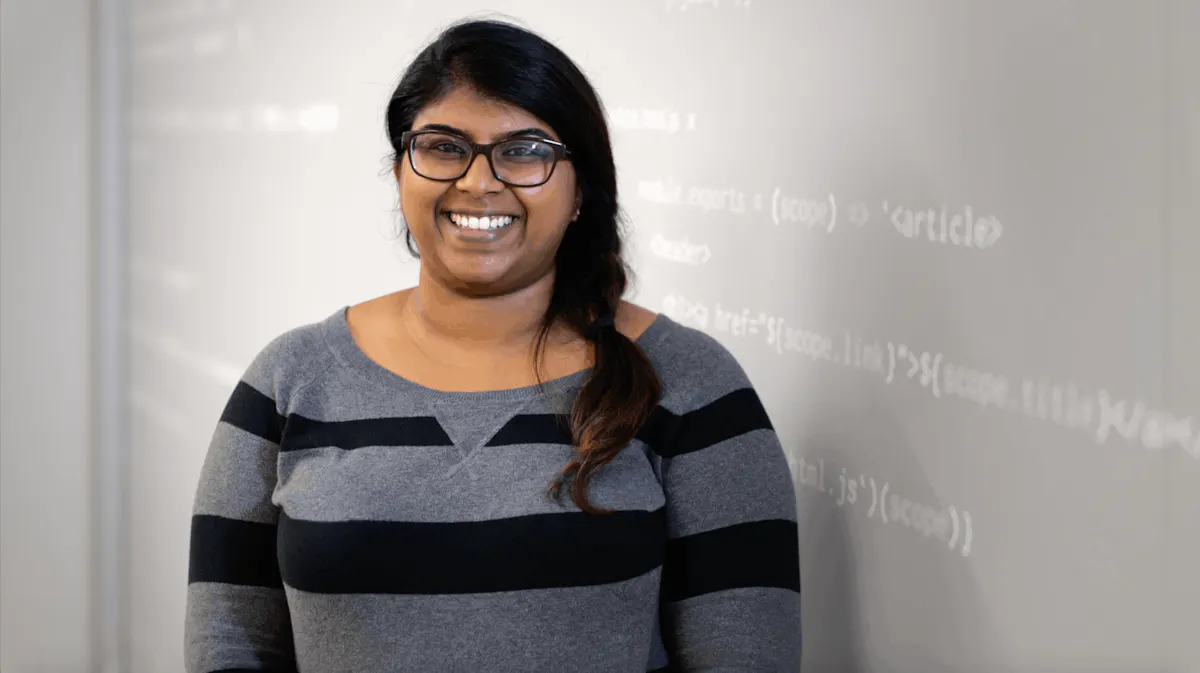Fill out the form to get more information about the Grace Hopper Program bootcamp of your choice.
09.11.2025
How Community Helped One Alum Find Her Calling as a Software Developer
By Emily Gregor

If you’re interested in furthering your education, it’s easy to place a lot of weight on the value and rigor of the program’s curriculum (and you should!), but the people you’re learning with can have just as much of an impact on your experience.
For Alizah Lalani, a software developer at Lifion by ADP and a Grace Hopper grad, the community was one of her primary reasons for choosing the Grace Hopper Program at Fullstack Academy. “I found that the group of women I was with was very smart, very caring, and very supportive. I absolutely loved the people that were in my cohort,” she says.
The Value of Pair Programming
She also found a lot of value in the focus on pair programming. “Most of my core learning that happened during Grace Hopper wasn’t necessarily during lecture—it was during pair programming,” she says.
Pair programming is a focus for all of Fullstack Academy’s software immersive programs.
Dan Sohval, Fullstack’s Director of Academic Product and Instruction, speaks to the fact that engineering work is rarely done solo.
“Within our core programs, the vast majority of student work is done collaboratively,” he says. “By integrating pair programming as a core component of our curriculum, students regularly engage with a number of skills they will need on the job.”
In addition, pair programming makes it so students aren’t facing complex coding challenges alone and can build confidence in their skills over time.
“Most of my core learning that happened during Grace Hopper wasn’t necessarily during lecture—it was during pair programming,”
— Alizah Lalani, software developer at Lifion by ADP and Grace Hopper grad
“If I ever got stuck when I was trying to teach myself, I was stuck. At Grace Hopper, when I got stuck, it was with people who were also learning at the same time I was,” Alizah says.
The Power of a Strong Mission
Alizah has always been passionate about diversity and inclusion, so the Grace Hopper Program’s mission really spoke to her. “I find that it’s great to have a community here,” she says. “If I ever want to change jobs and see that one of my friends is working at a company I think is cool or interesting, I can say, ‘hey, let’s talk a little more—maybe you can refer me to your company.’ And I think that’s a great network to have.”
The Grace Hopper Program was founded as a way to diversify the industry and to get more women+-identifying individuals working as software engineers. “Imposter syndrome is rampant at coding bootcamps since students are typically quitting their jobs to make huge career pivots and learning software development in under five months. That is why having a supportive community is crucial to success,” says Michele Cantos, Fullstack New York’s Managing Director.
In the most recent State of JavaScript report, 91.3% of the 19,409 survey respondents identified as male (less than 2,000 identified as female or nonbinary), showing that there’s still a lot of work that needs to be done to truly diversify the industry.
Before becoming a software developer, Alizah spent four years as an HR advisor for a bank on Wall Street, so working for a company like Lifion by ADP, which specializes in HR software, is a perfect fit for her now.
“It just kind of feels like you’re solving puzzles all day. If I had to do it all over again, I would definitely pick Grace Hopper,” she says.
If you want to learn more about the Grace Hopper community, explore more student and alum stories to see if software development could be the right career for you.


